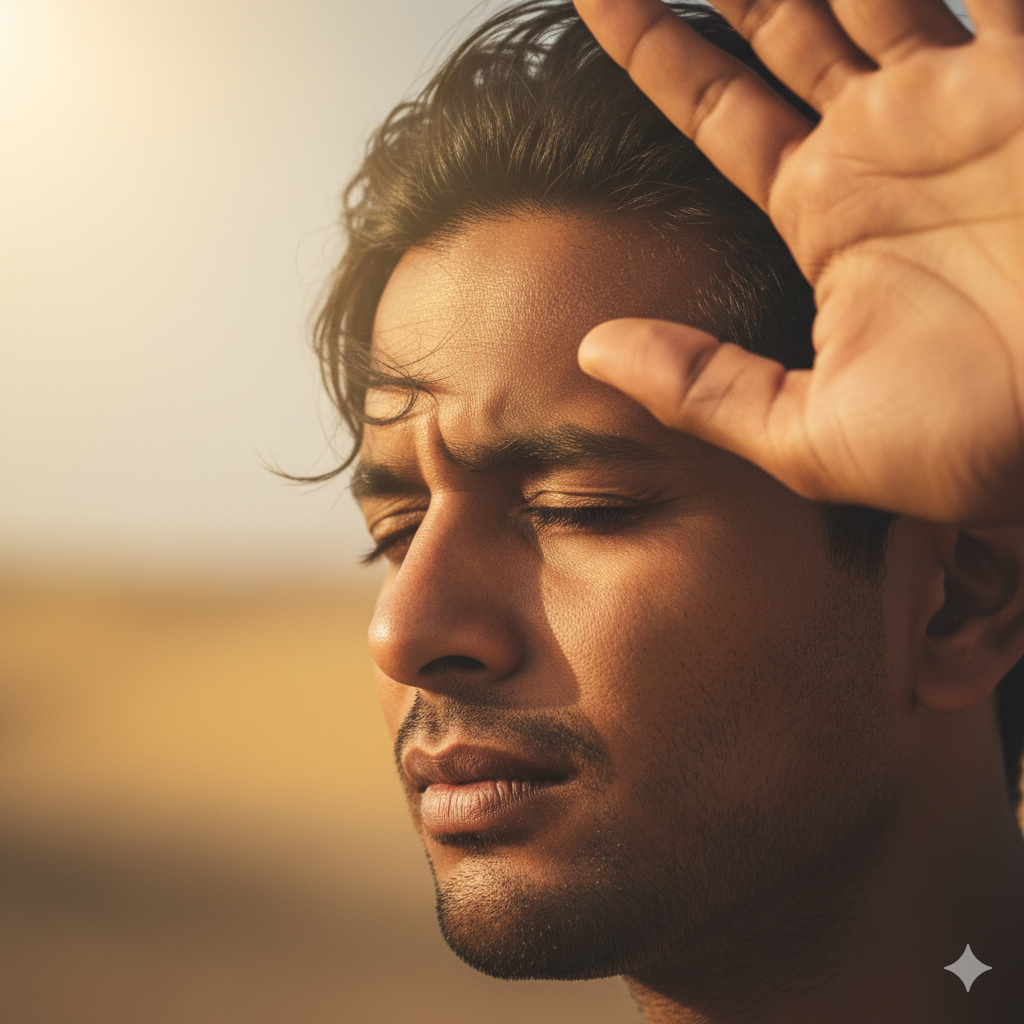
Sunscreen 101: How to Apply, Choose & Use the Right SPF for Your Skin Type
Did you know that UV exposure is the leading cause of premature ageing, pigmentation, and even skin cancer, and it can happen even on cloudy days or while you're indoors near a window?
Applying sunscreen should not be considered a summer accessory; it should be used daily because it protects your skin from the sun's harmful effects. Even when you are either oily-skinned, dry, sensitive, or acne-prone, the right sunscreen and proper application can significantly improve your skin condition and look.

Even with the spread of awareness, there is still much that goes wrong when people choose to use sunscreen incorrectly. Some people use SPF because it appeals to them due to numbers alone, and there are people who refuse to use SPF, given the fear of getting breakouts or looking and feeling slick in humid Indian weather. But the thing is that there is a sunscreen for any type of skin, and its correct usage can not be negotiated.
In this comprehensive guide, we’ll walk you through:
- What SPF means and how much you need
- How to apply sunscreen effectively for maximum protection
- How to choose the perfect sunscreen based on your skin type, be it oily, dry, or sensitive
- The differences between chemical and mineral sunscreens
- Common sunscreen mistakes and how to avoid them, and more.
There are some vegan sunscreens, there are some sunscreens perfected by the color and tone you have, and there is sunscreen for the face and sunscreen for the rest of the body. Walk into the store, and you can find yourself confused. We reassure you that there will no longer be guesswork, and this guide is meant to give you the clarification (and coverage) your skin is entitled to. It does not matter whether you are in the sunshine or in your laptop doing something; you need to protect your skin.
Pro Tip: Use the Cetaphil AI Skin Analysis Tool to find sunscreen and skincare products tailored to your skin's needs.
What is SPF and why is it Important?
Sun Protection Factor (SPF) indicates UVB protection. For instance:
- SPF 30 blocks ~97% UVB
- SPF 50 blocks ~98% UVB
With UVA aging and UVB burning, you require a dermatologist-approved broad-spectrum sunscreen day after day, even when you are inside the house, or it is cloudy. It avoids tanning, pigging, and collagen destruction as well as reduces the risk of skin cancer. Just imagine you have an invisible shield to protect your skin from the harmful sun rays and wear SPF every day.
How to Apply Sunscreen Correctly
Step 1: Choose the Right Time - How long before going out should you apply sunscreen?
- Apply 20 minutes before sun exposure
- Allow it time to bind with your skin
- For indoor use, apply after hydration and before makeup for daily protection.
Step 2: Amount of Sunscreen - How much sunscreen should you use on your face and body?
- Face & neck: 1/2 teaspoon or a nickel-sized dollop
- Arms, legs, and torso: 1 teaspoon per area
- Reapply full dose every 2 hours or after sweating/swimming
Step 3: Coverage - Ensuring even coverage across all exposed skin.
- Don’t skip ears, scalp partings, hairline, under the chin, and hands/feet
- Layer under makeup or hydrating boosters
- Ensure the entire face and neck are evenly coated
Step 4: Reapplication - How often should sunscreen be reapplied?
- At least every 2 hours outdoors
- After water exposure, towel-drying, or sweat
- Indoors, reapply every four to six hours, especially if near windows
How to Choose the Right Sunscreen for Your Skin Type
For Oily Skin - Look for non-comedogenic and oil-free formulas.
- Choose oil-free gel or water-based sunscreens.
- Example: Cetaphil Sun SPF 50+ Light Gel, broad-spectrum, lightweight, non-comedogenic
For Dry Skin - Opt for sunscreen with hydrating ingredients.
- Look for formulas containing hyaluronic acid, glycerin, and ceramides
- Example: Cetaphil Sun Liposomal Lotion SPF 30 hydrates while protecting
For Sensitive Skin - Choose sunscreens with natural and gentle ingredients.
- Opt for mineral filters: zinc oxide or titanium dioxide
- Example: Cetaphil Sheer Mineral Face Liquid Sunscreen, fragrance-free and gentle
For Acne-Prone Skin - Use lightweight sunscreens with anti-inflammatory properties.
- Pick non-comedogenic, oil-free, soothing sunscreens
- Example: Cetaphil Sun SPF 50+ Light Gel matte finish, won't clog pores
The Different Types of Sunscreens: Chemical vs. Mineral
Chemical: absorbs UV, converts it to heat (avobenzone, octinoxate)
- Pros: lightweight, invisible finish
- Cons: needs 20 mins to activate, may irritate sensitive skin
Mineral (Physical): reflects UV (zinc oxide, titanium dioxide)
- Pros: immediate protection, great for sensitive skin
- Cons: may leave a white cast on deeper skin tones
Dermatologists recommend the use of one product or alternation of both of them about the case of use.
Common Mistakes to Avoid When Using Sunscreen
- Applying too little, apply generously
- Skipping neck, ears, hands, or scalp
- Believing SPF 100 is twice as protective as SPF 50
- Not reapplying after swimming/sweating
- Not layering under makeup
Conclusion
One of the most effective measures you can take in terms of long-term skin health is adding sunscreen to your everyday skin care. Prevention of sunburn is not everything; daily application of an adequate SPF protects your skin barrier, postpones signs of premature ageing, fixes melanin unevenness, and reduces the incidence of skin cancer.
To recap:
- Understand what SPF means and always opt for broad-spectrum protection
- Apply generously and correctly cover every exposed inch
- Reapply every 2 hours when outdoors, and even indoors near windows
- Pick a sunscreen suited for your skin type: oily, dry, sensitive, or acne-prone
- Avoid common mistakes like under-application and skipping reapplication
- Opt for dermatologist-recommended products for maximum safety and efficacy
It is always important to be consistent. One should apply sunscreen daily, regardless of the weather, and with the skin-friendly, lightweight products there now, there is no easier way to protect your skin.
If you’re unsure which sunscreen is best for your unique skin profile, don’t leave it to trial and error.
Cetaphil AI Skin Analysis Tool can help you analyze your skin to receive customized advice on choosing the most appropriate SPF to be used on your face and body.
Thus, just like there are clothes to protect you even when you are going out briefly to run an errand, there are SPFs that will serve to protect you even when you are just lying down in your home. Safe today, shine tomorrow!
FAQs
How to use sunscreen for the best protection?
To get maximum protection, it is ideal that you apply sunscreen to clean, dry skin, and it should be done roughly 15-30 minutes before sun exposure. Apply a spot the size of a nickel to the face and some 1 ounce on the body. Use a cover at all exposed parts, even as hands, neck, and ears. Reapply every two hours or after swimming or sweating to keep on protecting.
Can sunscreen be applied to makeup?
Indeed, it is possible to reapply sunscreen over makeup with the help of SPF sprays or powder sunscreens that can be used to make touch-ups. First, put sunscreen under your makeup, giving it time to absorb. To reapply during the day, pat an SPF mist or cushion compact powder over the top of makeup and make sure not to disrupt the makeup underneath. This prevents wrinkling, and you do not have to sacrifice your appearance.
What SPF level is recommended for daily use?
Dermatologists suggest having a broad-spectrum sunscreen containing at least SPF 30 to use daily. It offers as much as 97 percent UVB protection, and that is good protection against moderate exposure to the sun. When you are outdoors for a long period of time, use SPF 50 that covers better. The sunscreen must give you protection against both UVA and UVB at all times and also be compatible with your skin type.
Can I skip sunscreen on cloudy days?
Not, you should never forego sunscreen during cloudy days. The clouds only allow up to 80 per cent of UV rays to enter and get your skin damaged, prematurely aged, and pigmented. Your skin should have sunscreen every day, regardless of whether the weather is cloudy, rainy, or cold. Daily, use a wide-spectrum SPF 30 or better later in the morning and in the morning, even when it may not seem sunny.
How long does sunscreen last on the skin?
Sunscreen normally takes two hours before its expiration. It loses its effectiveness in situations related to sweating, swimming, and rubbing the skin. Outdoor use: reapplication every 2 hours or after contact with water. In case of indoors, a single application might be used unless around windows. When you apply lotions that make your skin dry, make sure you see what is written on the label about how long you have to stay in water before it goes away.




